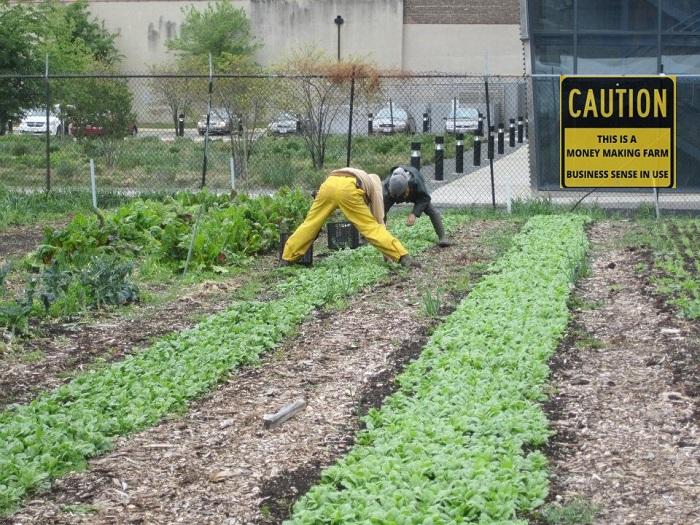As 2025 unfolds, the agricultural sectors in both the United States and the United Kingdom are grappling with an unprecedented array of challenges that threaten the stability of their farming industries. From volatile weather patterns and escalating input costs to labor shortages and shifting market demands, farmers across these two key economies are navigating a complex crisis with far-reaching implications for food security and rural livelihoods. This article delves into the critical issues driving the Farming Crisis of 2025, examining the economic, environmental, and policy factors shaping the future of agriculture in the US and UK.
Farming Crisis 2025 Escalates Amid Climate and Supply Chain Disruptions
The agricultural sectors in both the United States and the United Kingdom are confronting unprecedented challenges this year, with climate variability and persistent supply chain disruptions placing immense strain on farm operations. Unseasonal weather patterns, including prolonged droughts in parts of the US Midwest and unexpected floods in the UK’s southern regions, have slashed crop yields and threatened livestock health. Farmers are reporting significant losses, further aggravated by escalating costs for essential inputs such as seeds, fertilizers, and machinery parts.
Meanwhile, the lingering effects of global supply chain bottlenecks continue to hinder access to critical resources. Shipping delays and increased freight prices have pushed agricultural costs higher, forcing many farms to reconsider planting strategies and market engagement. The combined pressure of these factors has led to a ripple effect across food production and distribution networks. Key challenges faced by farmers include:
- Input shortages: Delays in fertilizer and pesticide deliveries.
- Labor scarcity: Reduced availability of seasonal workers impacting planting and harvest times.
- Energy costs: Rising fuel prices affecting farm machinery operations.
- Market volatility: Fluctuating commodity prices undermining economic stability.
| Region | Primary Crisis Factor | Crop Yield Impact (%) |
|---|---|---|
| US Midwest | Drought and Supply Delays | -25% |
| UK Southern Counties | Flooding and Labor Shortage | -18% |
| US Pacific Northwest | Energy Costs and Market Volatility | -20% |
Impact of Regulatory Changes on US and UK Agricultural Productivity
The recent wave of regulatory adjustments in both the US and UK agricultural sectors has sent ripples through farm operations, challenging productivity and profit margins. Stricter environmental policies, including reduced pesticide approvals and mandatory soil conservation practices, have compelled farmers to rethink their traditional methods. While these measures aim to foster sustainability, they often come with increased compliance costs and reduced crop yields in the short term. Farmers find themselves balancing eco-friendly mandates with the pressing demand to maintain output levels that meet national and international food security goals.
Key regulatory factors influencing productivity include:
- Enhanced emissions standards, affecting machinery use and fuel consumption.
- Water usage restrictions in drought-prone regions, limiting irrigation practices.
- Crop rotation and land use policies designed to improve biodiversity but complicating monoculture farming economics.
| Country | Regulation Type | Impact on Yield (%) | Common Farmer Response |
|---|---|---|---|
| US | Fertilizer application limits | -8% | Shift to organic alternatives |
| UK | Pesticide bans | -12% | Increased manual pest control |
| US | Water withdrawal caps | -5% | Investment in drip irrigation |
| UK | Soil health monitoring | -3% | Adoption of cover crops |
Expert Strategies to Mitigate Risks and Support Sustainable Farming
Farmers in the US and UK are increasingly adopting innovative measures to navigate the growing complexities of modern agriculture. Diversification of crops and livestock not only spreads economic risk but also enhances soil health by interrupting pest cycles and reducing chemical dependence. Precision agriculture technologies-such as satellite mapping, IoT sensors, and AI-driven analytics-are becoming essential tools, enabling real-time monitoring of weather patterns, soil moisture, and crop health. This data-driven approach helps farmers make smarter irrigation decisions and optimize fertilizer application, cutting costs and environmental impact simultaneously.
Policy support and community-driven initiatives also play a pivotal role in sustainability. Stakeholders emphasize the importance of:
- Collaborative resource management through shared equipment and knowledge networks
- Investment in regenerative practices including cover cropping and reduced tillage
- Access to climate-resilient seed varieties tailor-made for shifting weather conditions
These strategies are bolstered by government grants and private sector partnerships that encourage innovation while safeguarding biodiversity and ensuring long-term food security.
| Strategy | Benefit | Implementation Ease |
|---|---|---|
| Crop Diversification | Risk reduction & soil fertility | Moderate |
| Precision Agriculture | Resource optimization & yield increase | Complex |
| Regenerative Farming | Closing Remarks
As the Farming Crisis of 2025 continues to unfold, both the United States and the United Kingdom face an array of formidable challenges that threaten the stability of their agricultural sectors. From unpredictable weather patterns and supply chain disruptions to labor shortages and rising operational costs, farmers are navigating an increasingly complex landscape. Addressing these issues will require coordinated policy responses, technological innovation, and sustained support for farming communities. As stakeholders grapple with these obstacles, the future of agriculture remains uncertain-but the urgency to act has never been clearer. Stay tuned to Farmonaut for ongoing updates and in-depth analysis on this critical issue. |




